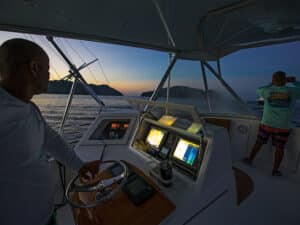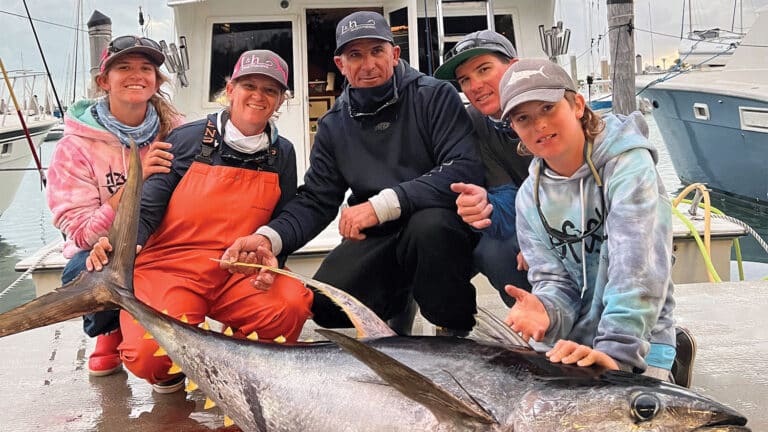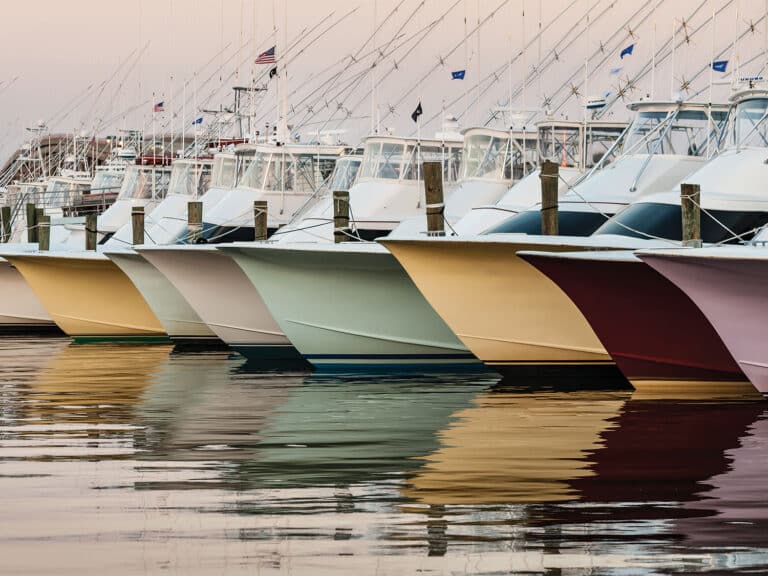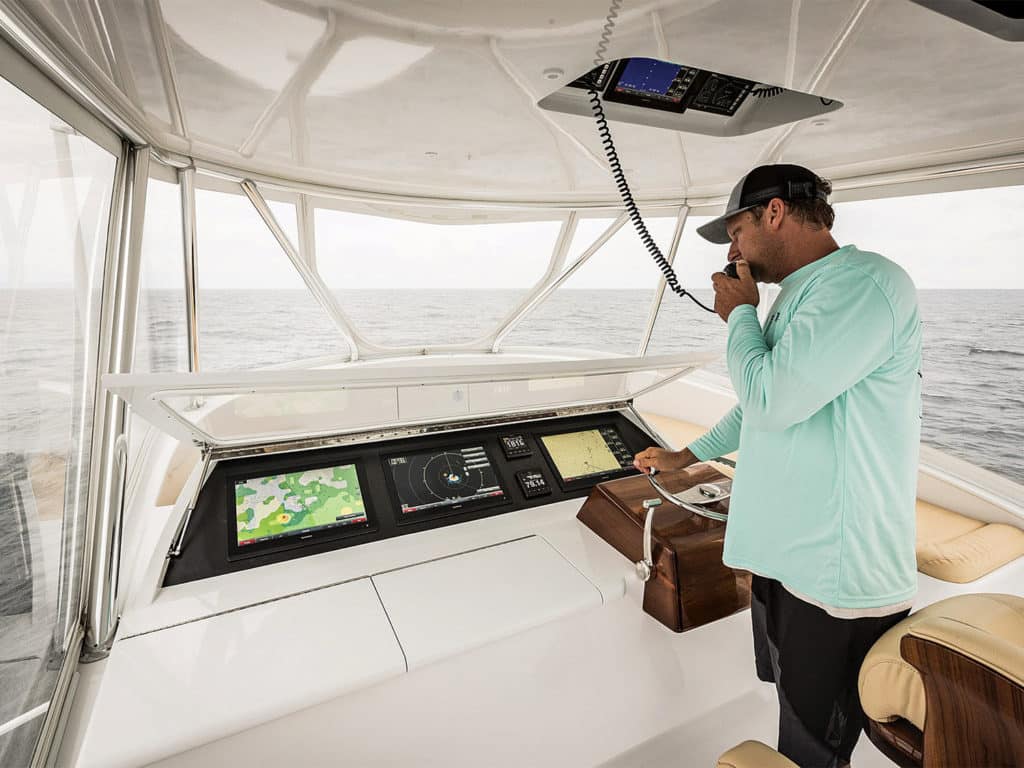
If you own a VHF radio manufactured in the past 15 years, it has built-in digital selective calling capabilities. The applications of DSC are plentiful, but most of us don’t take full advantage of them simply because most are just plain awkward to use.
If your radio does not have a built-in GPS, it must be connected to a GPS chart plotter to function. Correctly connected and programmed with a free government-provided nine-digit Maritime Mobile Service Identity number, it can send an SOS distress call that reports your location and displays it on all chart plotters connected to a DSC VHF with an MMSI number programmed into it, including the US Coast Guard.
Next, your DSC-equipped, MMSI-programmed radio can privately hail any properly equipped boats you wish to reach if you have their MMSI number programmed into your radio. While some mistakenly believe they can then have a private VHF conversation, that is not the case. Instead, the recipient receives a hail or a tone on his radio, and if he accepts your call, your position is displayed on his chart plotter and his is shown on yours. Some charter fleets use this feature to privately relay their positions with their partner vessels so they can share the action with other clients. But that’s rare and, it appears, those DSC-equipped radios properly connected to a GPS and programmed with an MMSI number are in the minority.
Watch: Learn to make a bonito strip teaser here.
Vesper, a New Zealand-based marine electronics company, has one solution for that in its new Cortex VHF/AIS system. It’s a black-box processor complete with a VHF handset that functions more like a smartphone than a radio. The handset features a touchscreen display and six dedicated buttons below with a rotary-dial cursor controller and enter key, allowing both touch and tactile control.
The display functions as a GPS plotter, VHF radio interface, AIS collision avoidance plotter, MOB navigation page, anchor alarm and more. You can enter friends’ MMSI numbers easily using the touchscreen keyboard and store them singly or in groups (for example, a group of charter teammates). The system integrates with any NMEA 2000 chart plotter and displays AIS and DSC signals on the plotter. If you prefer to keep the plotter clear of such data, Vesper offers a separate display, or simply use the handset display.
It didn’t take us long to set up the VHF and get to the MMSI entry page so we could program friends’ numbers. Three touch buttons can be assigned as favorite channels. We also set up other channels, like 16, 69 and 72, for hailing and pleasure-craft communications, making them one-button accessible to scan in series.
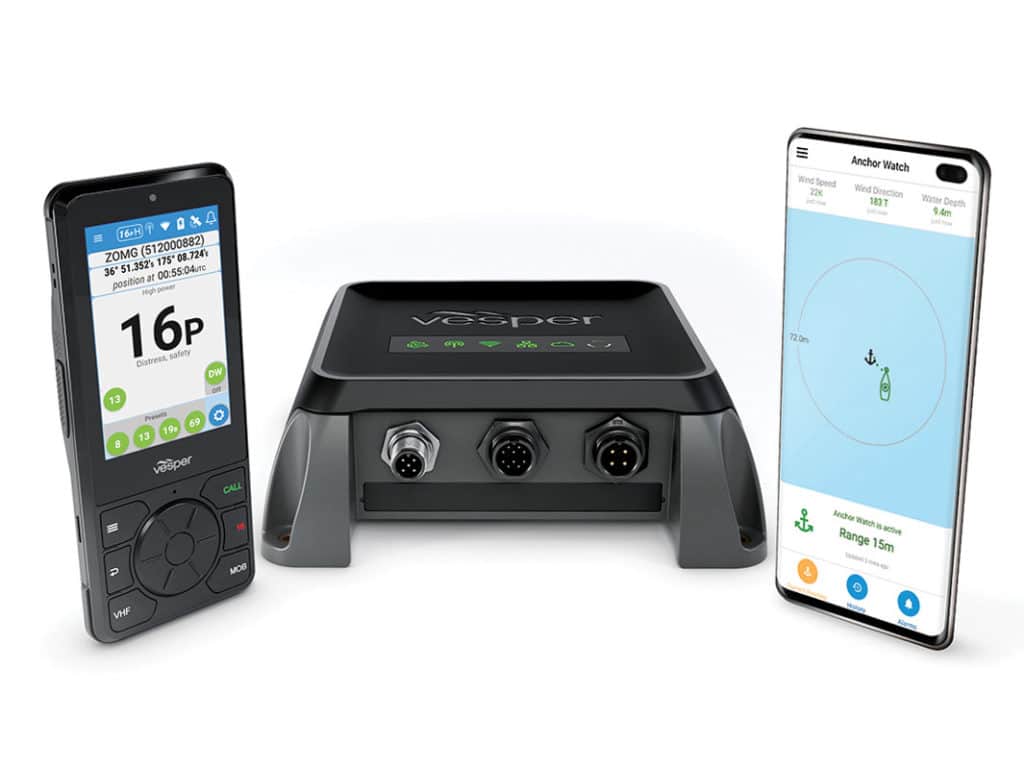
Setting an anchor alarm was as simple as tapping Menu, Anchor Watch and Drop/Weigh anchor. If the anchor drags loose, you are notified nearly instantly. Using Wi-Fi connectivity, the system can also report anchor movement via a dedicated smartphone app while you are away from the vessel.
Tap the dedicated Man Overboard button, and the display shifts to an MOB navigation page that guides you back to the lost passenger. There is also an oversize red touch button to set an MOB waypoint.
Read Next: Keep your electronics in optimal working condition with these tips.
If an AIS signal indicates a risk of collision, the collision-avoidance page pops up and suggests an avoidance maneuver or, by dragging the heading line on the touchscreen in a direction of your choice, you can select the maneuver, and the system will tell you if it’s adequate for safe passage.
It’s pricey at $1,800, but considering it includes AIS and eliminates basically all the objections to using the vast improvement in maritime safety and convenience provided by DSC, Vesper is inexpensive insurance against mishaps and a valuable tool for fishing buddies in separate vessels.
